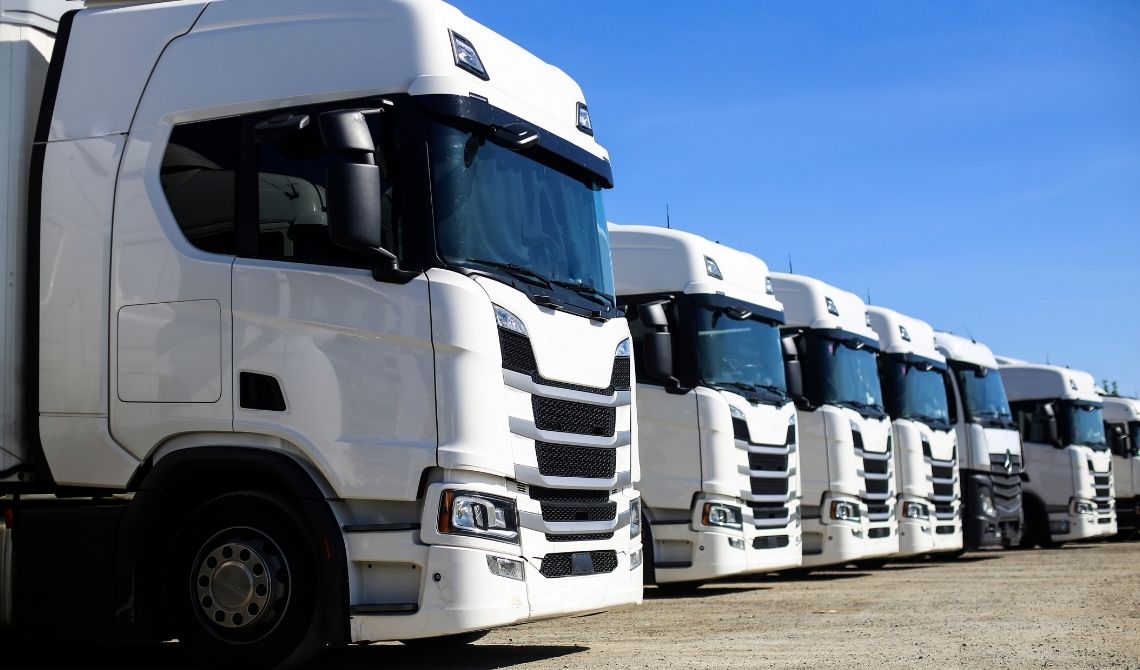1. Introduction to Heavy Truck Air Ride System
The air ride system in heavy trucks is a revolutionary suspension technology that enhances both comfort and efficiency for long-distance drivers. Unlike traditional steel or leaf spring systems, the air ride system uses air springs to cushion the truck’s ride, reducing road vibrations and shocks. This results in a smoother, more stable driving experience, which is especially important for trucks that carry heavy and delicate loads.
The system works by inflating and deflating air bags located at each axle, allowing the suspension to adjust based on the weight and road conditions. Not only does this improve ride quality for the driver, but it also protects the cargo from damage caused by excessive jolts and vibrations. Heavy truck air ride systems are designed to handle the stress and demands of the trucking industry, offering a durable and efficient solution for transporting goods across varying terrains.
In this article, we will explore how the air ride system works, its benefits, types, maintenance tips, and its future in the trucking industry. Understanding these aspects will help truck owners and operators make informed decisions about adopting and maintaining this innovative technology for their fleet.
2. How the Air Ride System Works
The air ride system operates through a combination of air springs, compressors, and valves, which work together to create a smooth and adaptive suspension. Instead of using traditional metal springs or leaf springs, the air ride system relies on inflatable rubber air bags. These air bags are mounted at the truck’s axles and are designed to expand and contract based on the load and road conditions.
When a load is placed on the truck, the air springs inflate to support the weight, adjusting the suspension height accordingly. This helps maintain an even distribution of weight across the truck’s chassis, minimizing stress on any one part of the vehicle. If the truck encounters rough terrain or bumps, the system automatically adjusts the air pressure in real-time, ensuring the truck’s ride height remains consistent for optimal stability.
Air compressors are responsible for maintaining the correct air pressure in the system. These compressors are usually powered by the truck’s engine, ensuring that the air ride system is always ready to react to changes in weight or road conditions. Valves control the flow of air, determining how much air is needed to inflate the air springs and regulating the deflation process when the truck is not carrying a load or encountering smoother roads.
This dynamic process results in a comfortable and balanced ride for both the driver and the cargo, regardless of the environment.
3. Benefits of Air Ride Suspension for Heavy Trucks
The air ride suspension system offers numerous benefits, making it a popular choice for heavy-duty trucks. One of the primary advantages is the improvement in ride comfort. Traditional suspension systems can cause a rough and bumpy ride, especially when transporting heavy loads over uneven or poor road conditions. Air ride suspension, on the other hand, smooths out these jolts by constantly adjusting to the terrain, offering a more comfortable experience for the driver, which is crucial for long-haul trucking.
Another significant benefit is the protection it provides to the cargo. The air suspension system absorbs road shocks and vibrations, preventing potential damage to sensitive or fragile goods during transit. This is especially important when hauling electronics, perishable items, or high-value equipment that could be negatively affected by rough handling.
Moreover, air ride suspension systems contribute to enhanced vehicle stability. They help maintain a consistent ride height, improving handling and balance, even when carrying a heavy load. This translates into better cornering, less sway, and an overall safer driving experience, reducing the risk of accidents caused by unstable cargo distribution.
Additionally, the air ride system can increase fuel efficiency. By optimizing the truck’s suspension and load distribution, the system reduces unnecessary wear on tires and other components, ultimately lowering maintenance costs and increasing the truck’s lifespan. These combined benefits make air ride suspension a valuable investment for heavy truck fleets looking to improve efficiency, cargo protection, and driver comfort.
4. Types of Air Ride Systems Used in Heavy Trucks
There are two main types of air ride suspension systems used in heavy trucks: the front air ride system and the rear air ride system. Each type plays a crucial role in providing a smooth ride, but they differ in their design and function based on the specific needs of the truck.
-
Front Air Ride SystemThe front air ride system is designed to reduce the impact of road shocks and vibrations on the truck’s front axle. This system is particularly beneficial for heavy trucks that require high maneuverability and stability. By inflating and deflating air springs at the front of the truck, it helps maintain a level and steady ride, improving steering control and comfort for the driver. The front air ride system also offers an added advantage of less wear on the truck’s steering components and tires, making it a valuable investment for trucks operating in challenging road conditions.
-
Rear Air Ride System
The rear air ride system is more commonly found in heavy trucks, especially those that carry large, heavy, or sensitive loads. Positioned at the rear axles, this system works by providing additional cushioning to support the weight of the cargo, ensuring that the load is evenly distributed and balanced. It allows for better weight management, prevents excessive bouncing, and reduces the risk of damage to both the truck and its cargo. Additionally, the rear air ride system improves stability and reduces the likelihood of the truck swaying, even under heavy loads.
Both systems can be used together to provide comprehensive air suspension across the entire vehicle. When compared to traditional leaf spring suspension systems, air ride systems offer superior comfort, durability, and adaptability. However, they can be more expensive to maintain and repair. The decision to choose a specific type of air ride system depends on the truck’s intended use, cargo weight, and road conditions.
5. Common Issues with Air Ride Systems
While the air ride system offers significant benefits, it is not immune to issues. Some of the most common problems that can arise with air ride suspension systems in heavy trucks include air leaks, compressor failures, and system malfunctions. Understanding these issues can help truck owners and operators address problems before they lead to more serious damage.
-
Air LeaksOne of the most frequent issues with air ride systems is air leaks. Over time, the air bags, hoses, and fittings can develop cracks or wear out, leading to a slow loss of air pressure. If not addressed promptly, this can result in poor ride quality, reduced load support, and system failure. Regular inspections and maintenance are necessary to detect and repair leaks, especially in high-pressure areas such as the air lines and air springs.
-
Compressor Failures
The compressor is a vital component that powers the air ride system by supplying air to the suspension. If the compressor malfunctions or fails entirely, the system will not be able to function properly. This can lead to an uneven ride height, reduced cushioning, and possible instability when carrying heavy loads. Common causes of compressor failure include overheating, wear from excessive use, or contamination in the air supply. It’s essential to replace the compressor before it completely fails to avoid costly downtime. -
Suspension System Malfunctions
The air ride system relies on various sensors, valves, and control modules to maintain proper functioning. A malfunction in any of these components—such as a faulty height sensor, pressure valve, or relay—can cause the system to lose its ability to adjust the suspension as needed. In some cases, this can lead to the truck sagging on one side, which affects both stability and safety. Regular calibration and diagnostics are important for ensuring that all system components are working correctly.
By staying proactive with maintenance and repairs, these common issues can be minimized, keeping the air ride system functioning at its best and ensuring smooth, efficient operations for heavy truck fleets.
6. Air Ride System Maintenance Tips for Heavy Trucks
To ensure that the air ride system operates at peak performance and has a long lifespan, regular maintenance is essential. Here are some key tips to keep your air ride suspension in top shape and prevent costly repairs or downtime.
-
Check Air Pressure RegularlyMaintaining the proper air pressure in the system is crucial for optimal performance. Low air pressure can lead to a rough ride, while excessive pressure can cause undue stress on the components. It’s important to check the air pressure levels regularly using an air pressure gauge to ensure they are within the manufacturer’s recommended range. This should be done before every long trip, especially for trucks that carry heavy or sensitive loads.
-
Inspect Air Springs and Hoses
Air springs are vital to the functioning of the air ride system, so regular inspection for wear and tear is necessary. Look for visible cracks, bulges, or signs of damage on the air bags. Also, check the hoses for signs of abrasion or leaks. Any damage to the air springs or hoses can result in air leaks, which can degrade the system’s performance. If any issues are found, they should be addressed promptly by replacing the damaged components. -
Clean the Compressor and Valves
The compressor and valves play a significant role in maintaining the air ride system’s efficiency. Over time, dirt and debris can accumulate inside the compressor or valve mechanisms, leading to poor system performance or even complete failure. Regularly clean these components and ensure they are free of contaminants. If the compressor has air filters, make sure to replace them according to the manufacturer’s recommendations. -
Schedule Professional Inspections
While truck owners can handle basic maintenance tasks, professional inspections should be scheduled regularly to ensure the air ride system is functioning optimally. A professional mechanic can perform a more thorough checkup of the system, calibrate sensors, and diagnose any issues that may not be immediately visible. Having a qualified technician inspect the system annually or semi-annually can prevent unexpected breakdowns and improve the overall reliability of the truck.
By following these maintenance tips, truck owners can help prolong the life of the air ride system and reduce the likelihood of encountering issues that could lead to expensive repairs or delays.
7. Air Ride System vs. Other Suspension Technologies
When it comes to heavy trucks, there are several types of suspension technologies available, each with its own advantages and disadvantages. In this chapter, we’ll compare the air ride system with other common suspension systems like hydraulic and mechanical suspensions, focusing on the key differences and benefits.
-
Air Ride Suspension vs. Hydraulic SuspensionHydraulic suspension systems use hydraulic fluid and pistons to absorb shocks and adjust ride height. While hydraulic systems offer smooth rides, they tend to be more expensive to maintain and repair due to the complexity of the hydraulic components. In comparison, air ride suspension is typically more cost-effective to maintain because the system’s components are simpler and more widely available. Air suspension also tends to offer better load leveling, as it automatically adjusts to the weight and road conditions, whereas hydraulic systems may require manual adjustments or suffer from performance inconsistencies over time.
-
Air Ride Suspension vs. Mechanical (Leaf Spring) Suspension
Mechanical suspension, particularly leaf spring systems, have been a long-standing choice for heavy-duty trucks. These systems use steel springs to support the truck’s weight and provide shock absorption. While leaf springs are durable and relatively low-cost, they offer a much rougher ride compared to air ride systems. The rigid nature of mechanical suspensions means they can’t adjust to varying loads as efficiently as air ride systems, leading to a less comfortable experience for the driver and more stress on the truck’s components. In contrast, air ride suspension is more adaptable, providing a smoother, more stable ride, especially when transporting sensitive or fragile cargo. -
Benefits of Air Ride Suspension
Air ride suspension stands out for its superior ability to provide a comfortable and stable ride, particularly when hauling heavy or irregular loads. The adjustable nature of the air bags ensures the truck’s ride height remains optimal, regardless of load size or road conditions. Additionally, air suspension reduces wear and tear on the truck’s frame and cargo, as it helps absorb vibrations and shocks that would otherwise be transferred through the chassis.
Overall, while each suspension system has its merits, air ride suspension tends to be the best choice for heavy trucks, offering the most flexibility, comfort, and cargo protection, making it an investment worth considering for modern fleets.
8. Future of Air Ride Systems in Heavy Trucks
As the trucking industry continues to evolve, so does the technology behind heavy truck air ride systems. Innovations in air suspension technology are expected to enhance both efficiency and performance, leading to even more advanced systems in the future. Here are some key trends and potential advancements that could shape the future of air ride systems in heavy trucks.
-
Self-Leveling Air Ride SystemsOne exciting development is the integration of self-leveling technology. In the future, air ride systems may feature more sophisticated self-leveling capabilities, automatically adjusting the suspension to ensure the truck remains perfectly level, regardless of the load. This would improve stability even further, especially when carrying uneven or fluctuating loads. These systems could reduce the need for manual adjustments, leading to less downtime and more efficient operations.
-
Integration with Autonomous Driving Technology
Another area of development is the integration of air ride systems with autonomous driving technology. As self-driving trucks become more common, air suspension systems will likely be enhanced to work seamlessly with automated control systems. This could lead to smarter ride adjustments based on real-time data from the truck’s sensors, optimizing the suspension for various road conditions and load weights without human intervention. The future of air ride systems could be highly automated, increasing overall efficiency and safety. -
Enhanced Durability and Efficiency
As materials and engineering techniques improve, future air ride systems will likely become even more durable and efficient. New, lighter, and stronger materials could reduce the weight of the air springs and components, improving fuel efficiency. In addition, innovations in air compressors and valves could make the systems more energy-efficient, extending the life of the system and reducing the overall cost of ownership. -
Environmental Considerations
With an increasing focus on sustainability and environmental impact, future air ride systems may also incorporate eco-friendly features. This could include energy-efficient compressors, recyclable materials, and designs that reduce energy consumption. The push for greener technologies will likely influence the development of air ride systems, ensuring they not only improve performance but also contribute to lowering the carbon footprint of heavy trucks.
As air ride systems continue to evolve, they will play an even more vital role in shaping the future of the trucking industry, making transportation safer, more efficient, and environmentally friendly. With these advancements, air suspension systems will remain at the forefront of heavy truck technology.
For detailed information, you can contact us at torqueusa.com


